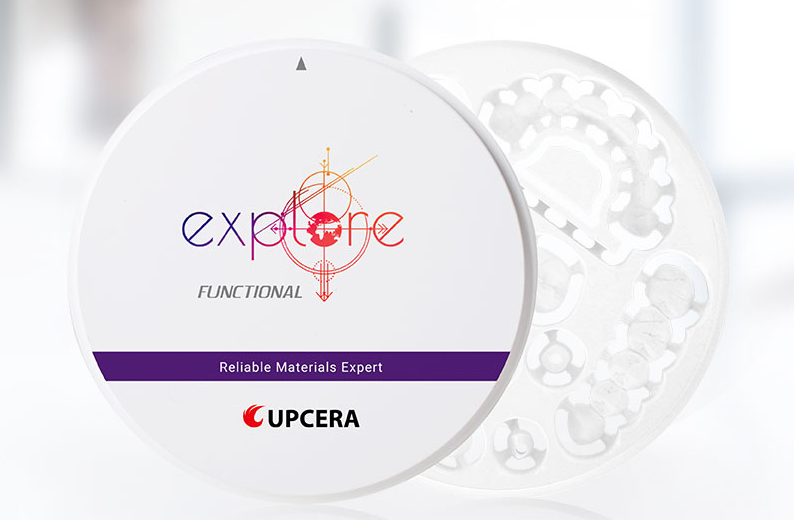Not everyone is gifted with a perfect set of teeth. Among all abnormal space between the upper front teeth is the least wanted by the majority.
This space is called the midline diastema or just diastema. Studies found it to have an overall prevalence of just 0.5%. The inhabitants of Ghana and Nigeria consider diastema to be a standard of beauty, but residents of some areas like America and Europe seek treatment for it. Curious patients can find lithium disilicate veneers to be the best solution!
Here, we shall discuss diastema's different causes and treatment options (lithium disilicate veneers, bridges, implants, braces, etc.).
Causes Of Midline Diastema
Children can develop midline diastema due to a number of causes:
l Family History
The gap between your teeth may be hereditary. It is generally seen in clinical practice that kids inherit diastema from their parents. The genetic basis is established in different studies, but environmental factors also play a part.
l Supernumerary Teeth
The most common cause of diastema is extra/supernumerary teeth. Research suggests that the most common complication of small supernumerary teeth present between the upper incisors (front teeth) is median diastema.
l Thick Labial Frenum
The labial frenum is a normal muscular structure present between the upper anterior teeth. In some cases, the frenum is thicker than normal, which pushes apart the two central teeth. The thick labial frenum is the second most common cause of diastema.
l Thumb Sucking
Habits of finger and thumb sucking at a young age can alter teeth growth and lead to the development of diastema.

Midline Diastema Treatment
There are plenty of options in dentistry to treat diastema. We shall be discussing the best options for you!
l Lithium Disilicate Veneers
A veneer is probably the best solution to cover up the teeth gap. There is a large variety of veneer types that can be employed to cover up the unnatural space. Laminate veneers and lithium disilicate veneers are popular esthetic treatment options for diastema.
The best thing about the glass ceramic lithium disilicate veneers is that minimal invasion and tooth cutting are required. Lithium disilicate veneers are strong and, at the same time, a highly esthetic restoration.
The use of lithium disilicate veneers (ceramic veneers) is highly advocated by dentists, thanks to successful case studies. It is an esthetic and conservative rehabilitation treatment.
l Dental Bridges
Another effective option to treat the gap between the teeth is a dental bridge. The most commonly used type of dental bridge includes a porcelain-fused to metal (PFM) bridge and a zirconia dental bridge. Ceramic bridges can also be used to achieve diastema closure.
Some dentists use a special type of dental bridge, i.e., the Maryland bridge, to cover median diastema.
l Dental Implants
Dental implants are fixed prostheses that are placed inside the bone. This type of prosthesis is only applicable when the diastema (space between the teeth) is so large that it allows the fitting of another tooth.
An implant placed between two extremely widely spaced teeth can cover up the defect and may appear esthetic. However, the results of such a treatment rely heavily on the expertise of the dentist.
l Dental Bonding
The simplest way to cover the gap between your teeth is to apply restorative material to the spaced teeth directly. The layering technique is used to fill the gap accurately. Studies show that the procedure is effective and long-lasting.
It was revealed in a long-term study that composite restoration for diastema has satisfactory survival rates. It is also concluded that following anatomical contour with direct restorations is easy.
l Braces And Frenectomy
Frenectomy is the surgical procedure to remove the hypertrophic (thick) labial frenum. The surgical intervention is used to treat diastema due to frenum issues. Orthodontic treatment (braces) is a long-term solution to manage diastema. In most cases, frenectomy and braces are used in combination to remove the source and cover the gap, respectively.
Case studies show successful closure of teeth gaps with braces and frenectomy. The only disadvantage here is that orthodontic treatments are long and loathsome.
Where to Get the Best Dental Materials?
Using the best quality ceramic and other dental materials is as important as choosing the right doctor. The dental materials’ quality greatly influences the longevity of the prosthesis.
l UP.CAD
The UP.CAD glass-ceramic block (lithium disilicate) is an excellent and durable esthetic with amazing restorative qualities. It can be used to make veneers for diastema management. The best thing is that the manufacturers use the best/newest technologies and optimized processing parameters to get a high-efficient product.

l UPCERA Explore Functional
The multilayer dental zirconium oxide product from UPCERA is super strong and durable for making zirconia dental bridges. Zirconia from UPCERA has great translucency and color, making it completely aesthetic.

You can get the best restorative materials by visiting UPCERA. Get the best dental materials and cover up the teeth gap of your patients now!
